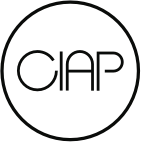Kunstverein
Publications
- The black gold cookbook,
— Barbara Prada - Antonio Vega Macoela's Incendio in Art Viewer,
— Art Viewer - Incendio by Antonio Vega Macotela,
— Alicja Melzacka - Where widowed objects meet orphaned ideas featured in BLOK Magazine,
— BLOK Magazine - DEMEURE ET CIVILISATION ,
— Jean-Baptiste Carobolante - l'art même - Martin Belou featered in The Word Magazine,
— Emi Vergels - Martin Belou: Objects, Love and Patterns,
— Dagmar Dirkx - Laurie Charles: Le Chalet,
— Dagmar Dirkx - Martin Belou at CIAP featured on Art Viewer,
— Art Viewer - Martin Belou featured on KubaParis,
— KubaParis - Laurie Charles featured in Subbacultcha,
— Elice Spillebeen
Laurie Charles: Le Chalet
author: Dagmar Dirkx
Laurie Charles (°1987, BE) writes, paints, and creates textile and video works. In her multimedia practice, she departs from a specific background in which narratives develop unpredictably. Charles gets inspired by fragments of speculative and literary fiction, which she cuts up and reassembles into new stories. Le Chalet – a sequel to her film Love of Matter (2016) – further investigates the possibilities of ‘an anthropology beyond mankind’. Alongside Le Chalet, Charles present an installation in CIAP consisting of monumental, white curtains depicting a series of greatly magnified organs.
In Le Chalet, four friends trek into unspoilt nature. Finding refuge in a small chalet, they share daily rituals and habits. Together they cook and eat, take walks in the woods, dance, and read stories to each other. Youthfully idealistic, the group hopes to find a sanctuary for cohabitation and contemplation, far away from standardised, socialised urban life. Their dwelling place recalls a long tradition of communes which – in an attempt to escape ‘a toxic society’ – have surrendered to nature, like the Naturists or the hippie movement.
Slowly, however, the idyll offered by the chalet and the surrounding wildlife yields to a feeling of alienation. The camera, observing their activities, starts to creep up on the group of friends. While they are washing dishes or dancing the night away, the camera stalks them unsuspected. Voices disappear, sounds become sinister, characters toss and turn in bed, and two knots in a wooden wall bear an eerie resemblance to tearful eyes. Utopia is turning into an oppressive nightmare in which the chalet seems to come to life and the actors are condemned to each other.
Laurie Charles subtly blends genres such as documentary, science- fiction, and horror. This is a conscious strategy – the artist employs the power of fiction to expose another fallacy: that of the ‘return to unspoilt nature’. To Charles, the nature-culture divide is a delusion, a Romantic notion which continues to fascinate.
The philosopher Timothy Morton, too, resists man’s age-old way of relating to his environment – as a colonist who sees the world as an entity ‘outside himself’ (1). Communes seeking to return to a state of harmony with nature, also indulge in that fictional dichotomy. After all, relocating ‘back’ to nature implies a preceding disengagement of nature and culture. In the past, these communes were the breeding ground for the ideas underlying later ideologies such as communism, libertarianism, or certain forms of anarchism – philosophies which continue to place man at the centre of the world.
In his book Humankind, Morton writes: “I capitalize Nature to de-nature it, [...], revealing its artificial constructedness and explosive wholeness” (2). In her imagery, Charles similarly emphasises Nature in order to ‘de-nature’ it. By focusing on such clichés as a kitschy landscape tableau with a brown bear, moonlight shining through the trees, or a copper wolf’s head hung on a wall, the artist makes the spectator see the artificiality of the dream. The hut and its surroundings are exposed as a ‘set’, a décor.
According to the feminist philosopher and biologist Donna Haraway, man is not an island, but an inhabitant of a cultural and relational world in which s/he depends on other organisms. Haraway regards this mutual dependency as both a joyful and terrifying matter, but above all as completely inevitable (3).
The interconnectivity is strongly palpable in Le Chalet. The camera takes an omniscient perspective: it doesn’t discriminate between object, nature, or human, but sees them as radically equal.
While the film Le Chalet primarily questions the relationship between culture and nature, with her curtains, Laurie Charles explores a bodily, individual relationship with the world. Just as the camera in the lm gets sucked through an air vent, a large, gaping mouth heredevours the spectator, absorbing them into a human body with organs blown out of proportions – an eye, a vein, the underside of a tongue. In their monumental simplicity, the curtains reference of early cave paintings. Like those paintings, both Charles’ lm and the curtains represent a (contemporary) search of man for a social and physical relation to an all-embracing cosmos.
This never-ending quest will always be captured in narratives, as the eco-historian William Cronon has remarked. Laurie Charles responds to Cronon’s call not to relegate these stories only to a scientific, biological, ecological context, but instead to tell them consciously, critically, and responsibly. When stories about ecology, about the Apocalypse of the earth, about new utopias themselves become narrative clichés, it is time to nd new stories in which to dwell. With Le Chalet, Laurie Charles has begun to write.
(1) See a.o. Timothy Morton, Dark Ecology. For a Logic of Future Coexistence, Columbia University Press, 2016.
(2) Timothy Morton, Humankind. Solidarity with Nonhuman People, Verso, 2017.(3) Donna Haraway, Tentacular Thinking: Anthropocene, Capitalocene, Chthulucene, E-Flux, 2016.
This text is produced in the context of the solo exhibition 'Le Chalet' (04.05 - 26.08.2018) curated by Louise Osieka and supported by The Flemish Government, The City of Hasselt, the members of CIAP, Fédération Wallonie-Bruxelles, Argos, Atelier Jeunes Cinéastes, Hasselt Millésime and Duvel Moortgat.

